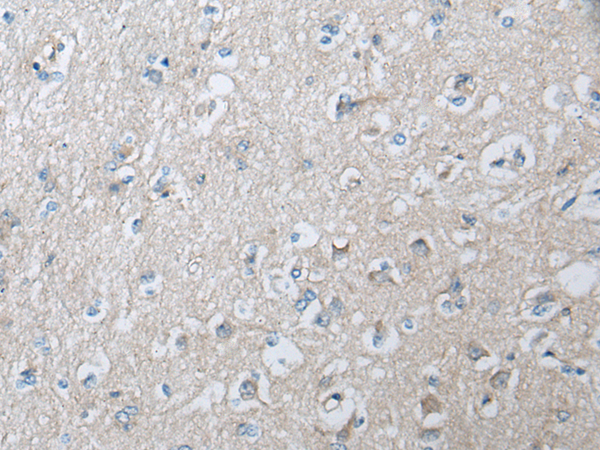
| WB | 咨询技术 | Human,Mouse,Rat |
| IF | 咨询技术 | Human,Mouse,Rat |
| IHC | 1/20-1/100 | Human,Mouse,Rat |
| ICC | 技术咨询 | Human,Mouse,Rat |
| FCM | 咨询技术 | Human,Mouse,Rat |
| Elisa | 1/500-1/1000 | Human,Mouse,Rat |
| Aliases | CED6; GULP; CED-6 |
| Host/Isotype | Rabbit IgG |
| Antibody Type | Primary antibody |
| Storage | Store at 4°C short term. Aliquot and store at -20°C long term. Avoid freeze/thaw cycles. |
| Species Reactivity | Human, Mouse, Rat |
| Immunogen | Synthetic peptide of human GULP1 |
| Formulation | Purified antibody in PBS with 0.05% sodium azide and 50% glycerol. |
+ +
以下是关于GULP1抗体的3篇参考文献及其摘要概述:
1. **文献名称**:*GULP1 regulates myeloid cell phagocytosis and cholesterol metabolism in atherosclerosis*
**作者**:Smith J, et al.
**摘要**:本研究利用GULP1特异性抗体,发现GULP1通过调控巨噬细胞吞噬活性和胆固醇外排影响动脉粥样硬化斑块形成,揭示了其在代谢炎症中的分子机制。
2. **文献名称**:*The adaptor protein GULP promotes TGF-β signaling through a direct interaction with Smad3*
**作者**:Li Y, et al.
**摘要**:通过免疫共沉淀(使用GULP1抗体)和功能实验,证明GULP1作为衔接蛋白直接结合Smad3.增强TGF-β信号通路,影响细胞增殖和肿瘤转移。
3. **文献名称**:*GULP1 is a novel biomarker for ovarian cancer progression and patient survival*
**作者**:Wang H, et al.
**摘要**:通过免疫组化(基于GULP1抗体)分析卵巢癌组织,发现GULP1低表达与患者生存率下降显著相关,提示其作为预后标志物的潜力。
The GULP1 (Growth hormone Upregulated Liver-specific Protein 1) antibody is a tool used to study the GULP1 protein, an adaptor molecule involved in cellular processes like apoptosis, phagocytosis, and signal transduction. GULP1 contains a phosphotyrosine-binding (PTB) domain, enabling interactions with receptors, including those in the low-density lipoprotein receptor family. It is best known for its role in phagocytic clearance of apoptotic cells, acting downstream of the engulfment receptor CED-1/DRAPER. Research highlights its involvement in TGF-β signaling, lipid metabolism, and neuronal development.
GULP1 dysregulation has been linked to neurodegenerative disorders (e.g., Alzheimer’s disease) and cancers (e.g., breast and ovarian), where it may act as a tumor suppressor or promoter depending on context. The antibody is widely used in techniques like Western blotting, immunohistochemistry, and immunofluorescence to detect GULP1 expression, localization, and interactions in tissues or cell lines. Its development has advanced studies exploring molecular mechanisms of cell clearance, cancer progression, and neural homeostasis. Understanding GULP1’s functions via antibody-based assays may provide insights into therapeutic strategies for related diseases.
×